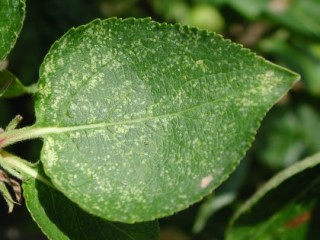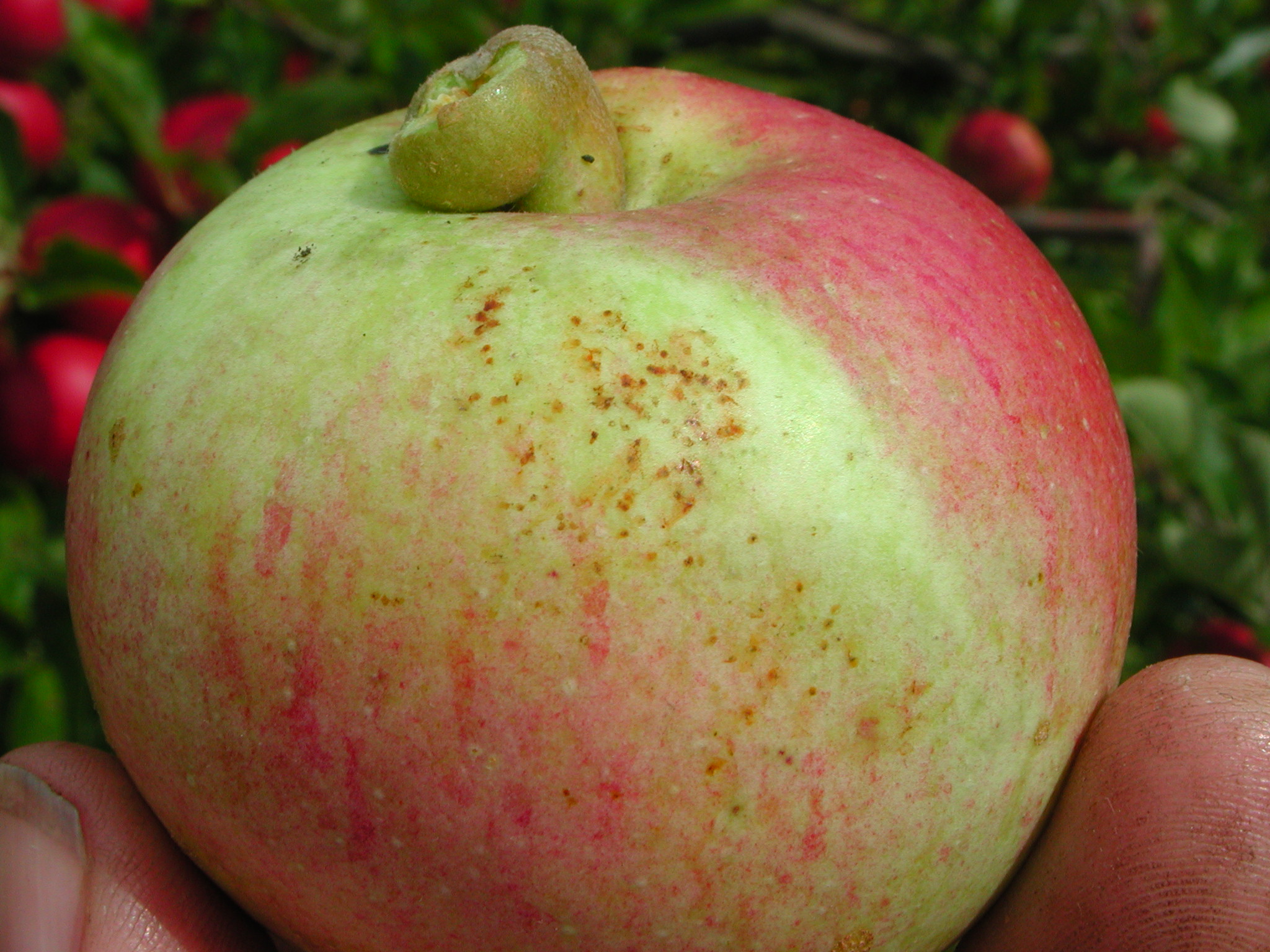
Leafhoppers feed on the non-vascular leaf tissue (mesophyll cells), puncturing the cells and withdrawing the sap.
- This causes white speckling of the leaves visible from above and below.
- Damage is usually most intensive on older leaves in the centre of the tree.
- When populations are very high, leaves of apple trees can become bleached by the end of the season.
- The photosynthetic activity of the tree is reduced as the chlorophyll content of cells is removed.
- This can adversely affect tree vigour and return bloom.
- Fruit surfaces below leaves which are fed on can become contaminated by numerous small brown spots of excrement.

- This contamination is fairly easily washed away by water, including by rain, during post-harvest drenching or grading.
- Some leaf hoppers transmit diseases.
- The leafhopper Fieberiella flori is a vector of the phytoplasma disease that causes apple proliferation disease. The vector does not occur in the UK.
